Pet peeves
Synopsis: It can be irritating when things go wrong, or your best efforts are thwarted. I’ve been keeping bees long enough that I’ve got a long list of pet peeves. Here are a few.
Introduction
I care about my bees and my beekeeping. It’s a big part of my life. Although it’s not reflected in these posts I do have other interests, but it’s fair to say that beekeeping takes up a significant proportion of my waking hours from April to, er, March.
And, like anything else, “if it’s worth doing, it’s worth doing it well”.
You might not always achieve this – and there are some notable days when I don’t even get close – but it’s probably more rewarding if you do.
For example …
- understanding the drivers of swarming,
- identifying the signs of swarm preparations in the colony (such as charged queen cells),
- acting promptly by applying appropriate swarm control,
- and, several weeks later, re-uniting the colonies headed by the new queen in time for the summer nectar flow
… is much better than panicking when, during one of your shamefully sporadic inspections (because it’s a busy time at the allotment/golf club/marina), you discover serried rows of sealed queen cells and a puzzling shortage of workers.
Undeterred, you scrabble through the box in a vain attempt to find the queen {{1}}, fail, ponder what to do with the queen cells so crush them ‘just to be on the safe side’ and reassemble the hive with the nagging feeling that you don’t quite understand what’s happened.
Spotting the telltale signs and preventing swarming is an example of doing something well.
It’s doubly rewarding; firstly because you know what’s happening and what to do – you, not the bees, are in control – and secondly because you’ll get a larger crop of honey at the end of the season.
But, don’t think I’m arguing for perfectionism …
What’s wrong with the world
In G.K. Chesterton’s 1910 book What’s wrong with the world he makes the oft-abused quote:
If a thing is worth doing, it is worth doing badly
Which also has a lot to commend it.
Chesterton was making an argument in favour of the generalist, the amateur or the non-professional.
You don’t have to do something perfectly for it to be worthwhile. Mistakes are allowed and cock-ups are to be expected, particularly when learning.
Arguably, it is the monstrous trumpeting snafus that are the most instructive.
Far better you inspect the colony, realise something is amiss and try and do something about it, than just ignore it, cross your fingers and hope things work out OK.
And far better you try and manage your bees than slouch on the sofa watching daytime TV … or [insert undesirable activity here].
But, if you have learned – from mistakes or otherwise – to do something well, or you are trying to learn to do something better, things that do go wrong can be irritating.
And, at times, infuriating.
Usually these irritations are self-inflicted. My lack of attentiveness, or understanding, or patience, or investment, or intelligence {{2}} regularly comes back to bite me.
But sometimes – like the first item on the list below (which was the germ of the idea for this post) – they’re not my responsibility at all.
A peeve is ‘a source of irritation or annoyance’. It is often prefixed with ‘pet’ to – ironically – indicate a ‘beloved’ irritation.
Not all these peeves are things that go wrong, some are things that are wrong.
You will have your own … these are some of mine.
Mishandling honey
I’ve been making the pre-Christmas honey deliveries. It seems to be a popular gift. Or, more prosaically, perhaps it’s being used to prepare honey glazed parsnips, carrots or gammon.
Whatever … Kerching! … a sale is a sale.
I produce three main types of honey; heather, soft set (usually a blended spring honey) and summer blossom honey. The first two are set or semi-set, the last is a gorgeous golden clear runny honey.
Whatever the type of honey, I take care when jarring it for sale. After all, it might be a gift. Aside from doing the obvious things like excluding bubbles (and legs or wings) I’m also careful to avoid getting honey on the neck or thread of the jar. It’s unsightly and, with a drip free honey valve on your tank, easy to avoid.
Therefore, having prepared and delivered a box of beautifully jarred clear honey to one outlet, I was aghast that they carried it on its side (!) to their storeroom. Inevitably the neck of the jars and the inside of the lids would be covered in honey.
Obviously, they bought it, they can do what they want with it. But my name is on the jar and I don’t want customers to be put off from buying my honey in the future.
I pointed out the consequences of tipping the boxed honey but they seemed unconcerned. This outlet sells a lot of my honey so perhaps I shouldn’t be irritated … I’ll try and avert my gaze next time.
Blown frames
While I’m on the subject of honey, I get unreasonably irritated by frames that collapse (‘blow’) in the extractor.
After several hours of extracting my patience is already wearing a bit thin. By then I’ve processed all the full supers and am now shuffling part-filled frames from half-full supers, attempting to efficiently extract the last of the honey with the fewest runs of the extractor.
With these different weight frames my nine frame extractor gets more difficult to balance. At slow speeds all seems OK, but as the speed increases a gentle oscillation starts as the machine rocks on its castors.
A steadying hand might even be needed.
Sometimes you can accelerate through the wobble. Typically this is when the increased speed spins out the honey from some of the heavier frames, so rebalancing the rotor.
But at other times the wobble gets worse … and, with a little more speed, worse still.
Under these circumstances the correct course of action is to stop the extractor, rebalance the rotor (perhaps even removing three of the over/underweight frames) and spin again.
But I’ve been extracting for hours … so, is that what I do?
Nope. Captain Sensible has left the building. Major Accident now has his hand on the throttle and is in ‘pedal to the metal’ mode while simultaneously holding down the wibbly-wobbly extractor.
Inevitably, a frame blows.
Almost immediately the wobbling gets a lot worse … or miraculously disappears altogether.
A run or two later and the broken chunks of comb start blocking the honey gate, then – released from the gate – they start blocking the coarse filter.
Grrrr.
Brutalised bees
I’m old enough to have used the Mosaic browser back in the 1990’s. Web searches took a lot less time {{3}} as there was no Facebook, YouTube or Twitter.
There probably weren’t a lot of beekeeping blogs.
How things have changed.
Now when you search for ‘easy queen rearing’ or ‘swarm control’ or even ‘winter inspections’ {{4}} you are offered 1,678,563 pages with variously relevant content.
Much of this is highly visual – YouTube, Vimeo or TikTok videos. Some is excellent quality and informative but there’s more that is shaky, shonky and shockingly ill-informed.
To quote from that halcyon Mosaic era (Farber, 1994):
Naive users are unaware of the lack of quality control on the information, a fact that might easily turn the ‘Net’ into a jungle of roads with no signs leading to goods of dubious value.
So what? Bad information and misinformation are all part of the new normal.
How many valuable insights or useful colony manipulation techniques are you really going to find in a 3 minute wobbly video titled ‘My fisrt ever hive inspection!!’ ? {{5}}
But, worse, some of these videos show some very shoddy beekeeping:
- one-handed frame handling with bees clearly being crushed by a welders glove’d hand
- frames being wrenched out and dropped back into the brood box
- hives opened, and left open, in adverse conditions
- clumps of bees falling or being shaken onto the ground
- supers or brood boxes being added with no attempt to avoid obliterating bees at the interface
Clickbait corpses
Bees may not be sentient – though that’s arguable (Gibbons et al., 2022) – but that does not excuse handling them in a way that is clearly likely to stress, injure or kill them. To do so gives a poor impression of what beekeeping should be like.
Unsurprisingly, there are some who consider beekeeping in its entirety – or particular practices used when beekeeping – as cruel and barbaric. The worst of these videos could be used as supporting evidence.
I’m not going to name names but the fact that they periodically appear in my searches (when I tend not to watch much YouTube content) suggests they are more frequent than they should be.
I’ve no idea of the advertising revenue returned by YouTube or TikTok. Whatever it is, I don’t think it excuses the lousy impression it gives of beekeeping … and the incorrect impression of the care most beekeepers lavish on their bees.
And then there are the technically poor videos that are excruciating to watch because of the one-handed camera work, the wildly fluctuating focus, the inaudible or inane commentary or the fact that the film doesn’t actually show what it claims to be about {{6}}.
But that’s a different pet peeve.
Missed queen cells
OK, perhaps I’m getting unseasonally serious … here’s an irritation that I experience periodically and which is entirely my fault.
I’m pretty good at spotting queen cells. When I inspect a colony I suspect may be making swarm preparations I know to look carefully at the edges of the frames, and in all the little undulations and wrinkles in imperfectly drawn comb.
I’m patient. I gently blow bees away from these likely spots … either the exhaled CO2 or halitosis opens a brief portal through the densely overlaying workers to the comb beneath {{7}}. If I’ve remembered my reading glasses I’m confident I can find most sneakily hidden queen cells.
And, if I’ve forgotten my glasses I shake all the bees off the frames which I then hold at arms length to get an in focus, bee-free view. Surely I can’t miss any cells now?
But it only takes one …
Which is why I clip my queens. If I do miss a charged cell and the colony swarms in the 7 days before my next visit, the queen might be lost but 99.995% of the bees will return to the hive and I’ll be able to rescue the situation in due course {{8}}.
‘Rescuing the situation’ involves also simultaneously berating myself for missing the cell.
An irritation certainly but, in the overall scheme of things, a minor one.
‘Super’ queens
Not super quality queens, but instead queens that have got above the excluder into the super.
During a routine inspection you fail to spot the queen but note that the colony is clearly queenright as there are eggs and larvae on brood frames. You return the last frame to the hive – the ‘make space’ frame you’d removed at the beginning – add back the excluder and the supers.
All done.
But at the next inspection you find the brood box only contains sealed brood. There are no queen cells and it feels queenright (you know what I mean).
Puzzling Captain {{9}}.
Either then, or a week later, you eventually get round to burrowing through the supers and discover frame after frame of brood in all stages.
Slap forehead time.
An irritation, but not a disaster.
I get a queen in the supers once every three or four seasons. Sufficiently infrequently that the need to rigorously check for the queen on the excluder isn’t reinforced before I put it aside during an inspection.
More rarely it’s due to a faulty excluder. I’ve got one that’s even labelled ‘Dodgy’ which has been present on a couple of occasions with a queen in the supers. Although the wires look perfectly straight I don’t really trust it and only use it when I’ve run out of everything else (see next topic).
The ‘no excluder’ excluder
If I need to super a colony but don’t have a spare excluder to hand I have successfully used a Correx Varroa tray laid on top of the brood bars. This leaves a ~2 cm gap around the periphery. Since the queen rarely ventures to the extremities of the brood frames this usually does the trick until my next visit.
Dave Cushman describes a similar concept made of plywood. Interestingly he claimed that this will not stop a queen venturing upstairs if the supers are filled with drone comb. This isn’t something I’ve noticed and I use a lot of drone comb in my supers.
It also suggests to me that – if there is drawn drone comb in the super – either the workers entice her up or she goes up anyway to check … and stays.
Interesting.
Not enough [insert item name here]
For 3-4 weeks of the season the swarming period puts a strain on the availability of equipment for swarm control. For the remaining 11 months of the year that same equipment puts a strain on the space in your storage facilities.
I’ve got a ridiculous amount of beekeeping ‘stuff’, accumulated over the years as my colony numbers fluctuated or I largely switched from cedar to poly, or I lost patience with a poor design of box or roof or floor.
Or, heaven forfend, actually believed some advertising codswallop.
So, with cubic metres of equipment stacked up in the sheds (yes, plural) it’s irritating when I run out of something.
Even worse, I’ve sometimes not run out, it’s just that it’s in a shed on the other side of the country.
For boxes, nucs, split boards, roofs, floors etc. this is the single most compelling argument for equipment compatibility. If push comes to shove, any floor without a daft rebate or lip that’s of the correct dimensions will do.
Duplication and apiary hygiene
For smokers, hive tools, clearers, split boards and other peripherals we depend upon during apiary visits this argues for duplication where possible and/or better organisation than I can manage.
Actually, for the some of these – e.g. smoker and hive tools – good apiary hygiene argues that they should be duplicated. If you change your gloves between apiaries, a dedicated smoker and a hive tool in a bucket of soda, will significantly reduce inter-apiary pathogen transmission.
Finally, it’s always worth remember that “the bees don’t care”. They’ll cope perfectly well with a mismatched floor, or a Varroa tray as a queen excluder, or a garden plant tray as a roof … as long as the hive is watertight, relatively draft free and defendable they’ll be OK.
Printed magazines and newsletters
This is the 21st Century. We have self-driving cars, internet banking and Bluetooth-enabled toasters {{10}}.
Why on earth do some of the beekeeping associations I belong to insist on sending me a glossy monthly printed magazine?
I collect a pile of these every year, shift them from my office to shelving in a distant corner of the house when spring cleaning, and then chuck them into the recycling a year or two later.
Between my office and the recycling bin they are not read again.
Not read, but they might have been looked through as I try in vain to find an article I vaguely remembered. The looking through is necessary as the indexing is almost always execrable.
This isn’t a beekeeping-specific problem. Wildlife Trusts do it, as do the RSPB, the BTO, SOC and the Wild Trout Trust … all ‘environmental’ charities that should surely aim to fell less trees when communicating their good deeds to members.
We must have reached a stage when these publications could be a) primarily distributed digitally, b) properly indexed, but c) still available in a printed form for those who want to read them in the bath.
[Climbs down off soapbox]
11.4% (by weight) of Api-Bioxal
88.6% of Api-Bioxal is oxalic acid dihydrate. The remainder – the 11.4% that peeves me – is sugar together with some sort of powdered silica (or similar) to keep it free-running.
As far as I can tell these additives – that I’ve previously disparagingly described as ‘cutting agents‘ – are of no benefit to the bees. Perhaps it’s unfair to call these additives lacing or cutting agents, which are usually added to increase the profitability of illegal drugs.
Or then again, perhaps not.
The additives make an excellent miticide (natural, organic, no known resistance, relatively inexpensive, well tolerated by the bees) much more difficult to administer by vaporisation as the sugar caramelises and makes an unholy mess of the vaporiser tray.
Yes, there are other ways that it can be administered and it’s good to see a liquid, glycerol-based solution with a long shelf-life available this year. However, I don’t see the sense in taking something, making it worse and then licensing it …
I’m going to write a lot more about Api-Bioxal next year. In the US – where it is a different product with the same active ingredient (!) – it’s about to be approved for use when there are supers on the hive {{11}}.
Overly long blog articles
These are the first 8 of the 97 beekeeping items (and counting) that irritate me.
I could go on, but I won’t.
But, never fear, I’ll return to this subject in 14 more rambling posts over the coming weeks.
Enjoy!
References
Farber, M. (1994) The quality of information on internet. Computer Networks and ISDN Systems 26: S75–S78 https://www.sciencedirect.com/science/article/pii/0169755294900752.
Gibbons, M., Versace, E., Crump, A., Baran, B., and Chittka, L. (2022) Motivational trade-offs and modulation of nociception in bumblebees. Proceedings of the National Academy of Sciences 119: e2205821119 https://www.pnas.org/doi/full/10.1073/pnas.2205821119.
{{1}}: Hint … she’s long gone!
{{2}}: I could go on.
{{3}}: Despite the fact that computers had less processing power than an HB pencil.
{{4}}: Why … just why?
{{5}}: Yes, the typo is deliberate.
{{6}}: I can think of a couple of corkers on queen rearing.
{{7}}: I hope it’s the CO2.
{{8}}: 99.995% … assuming that the colony has 25,000 bees in it, that the swarm partition is 75% – which you know from last week – and that only the clipped queen fails to return after attempting to swarm.
{{9}}: I’m not sure Spock ever uttered these words.
{{10}}: Not a good idea … but then nor are WiFi-connected cat feeders.
{{11}}: If any readers can point me to current documentation I’d be grateful. All the info I could find was dated 2021.
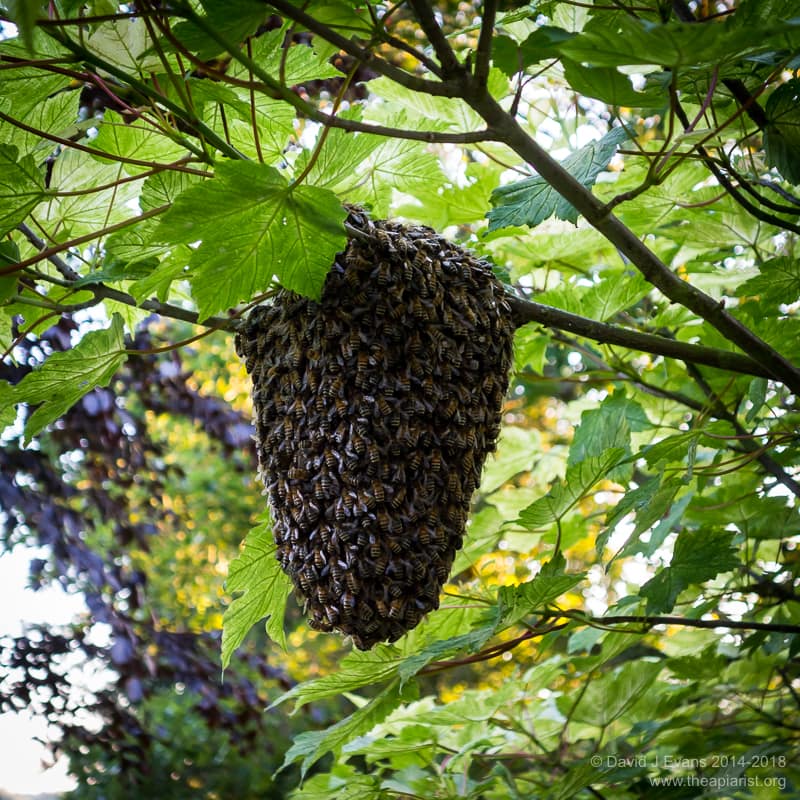

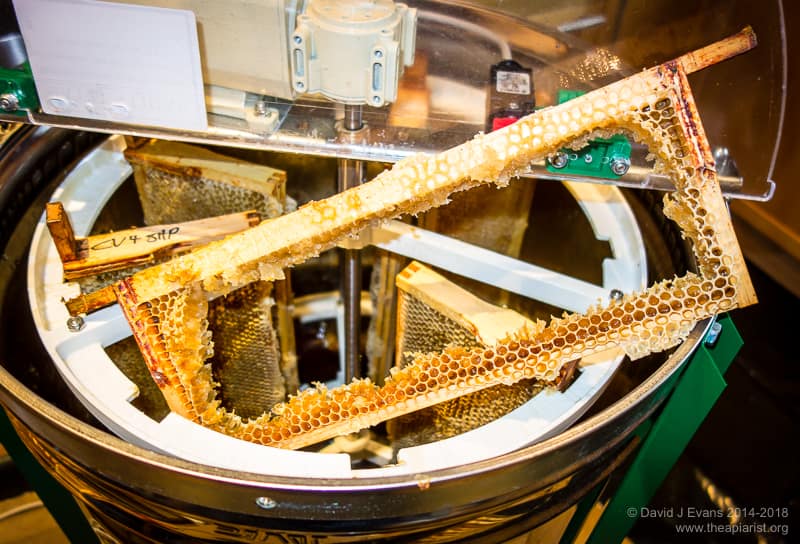

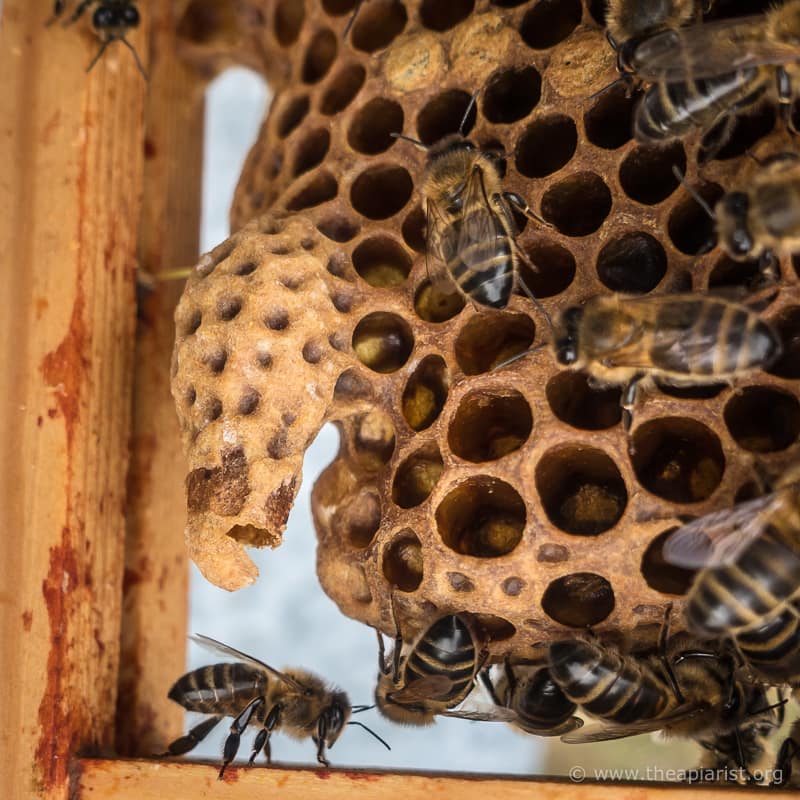


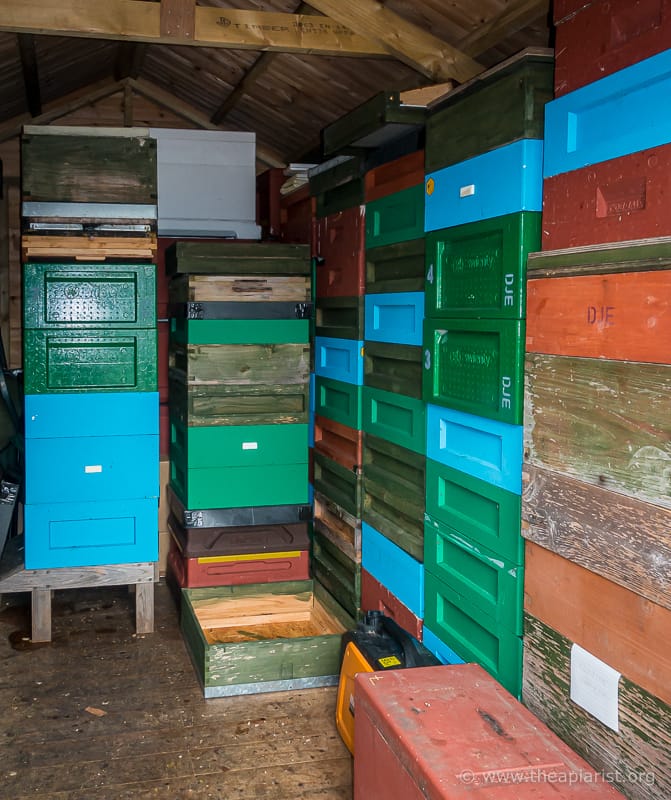
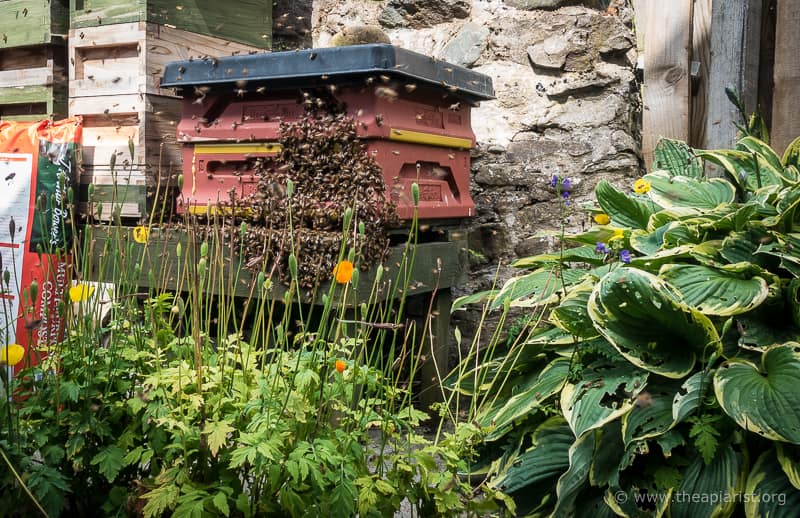

Join the discussion ...